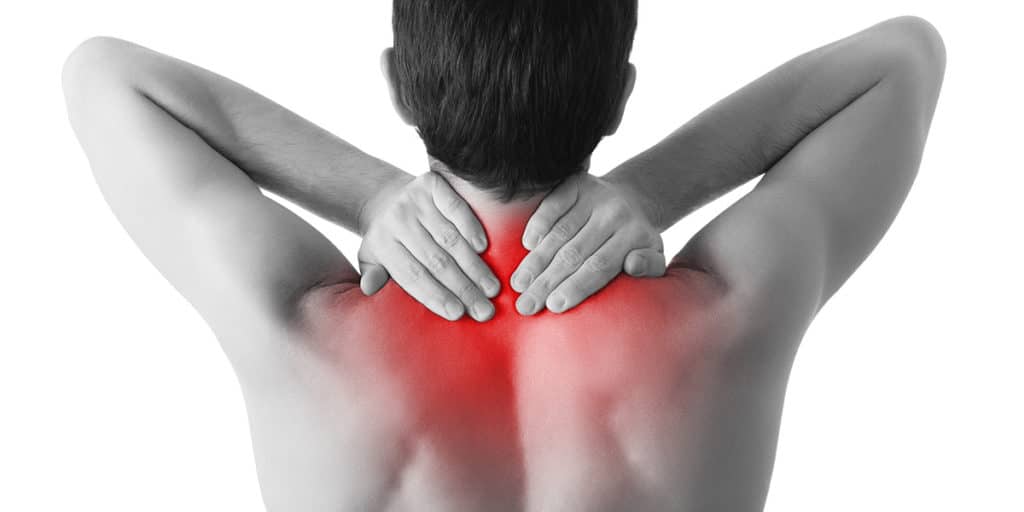Inverted Decompression: The Best Natural Muscle Relaxer
At some point in life, nearly everyone struggles with back pain and muscle tension. Its commonality and frequency can be frustrating, and even more aggravating are the wide-ranging causes of muscle tightness, which can be brought on by overuse, under-use, strain or stress!
Fortunately, if you’re one of those people who’ve wondered if there will ever be an end to your muscle tension and back pain, there is an effective, FDA Registered 510(k) Medical Device that you should know about.
But first, let’s delve into what causes stiff muscles in the back, address common solutions for muscle tension and then explore an easy-to-use device you can use in your own home to help relieve muscle tension in just minutes a day.
What Causes Muscle Tension?
Muscle tension is a result of when a muscle (or muscles) contracts and does not let go. This often results in stiff or achy muscles. Common symptoms include a tightness or pulling feeling, twitching, cramping, or spasms. The sensation associated with muscle tension can range from a sharp, stabbing pain to a more constant, steady pain.
Tension in the muscles can be caused by overuse or injuries, as well as stress and poor posture.
In fact, poor posture can lead to chronic muscle tension and back pain!
Those who work desk jobs, drive for a living, or otherwise sit during the majority of the workday are more likely to suffer from muscle tension due to poor posture. Sitting disease, as the American Heart Association has dubbed it, can cause serious health concerns.
Occupational overuse syndrome, or repetitive strain injury, affects the muscles, joints, tendons, nerves, and soft tissues surrounding the injured area. The body may try to protect itself by tightening the muscles and tendons around the injury. This can often cause quite a bit of pain at the site and even radiate outwards.

How to Relieve & Prevent Muscle Tension
Muscle tension can be avoided with changes to lifestyle or behaviors, including not overworking muscles, reducing elements of stress in your life, and improving posture.
This is all well and good in theory, but oftentimes what we SHOULD be doing for our health is not always possible or realistic, and often people turn to outside sources for help with muscle tension relief.
While medications such as muscle relaxers can help temporarily relieve muscle pain, long-term use can actually cause pain to worsen and should be avoided. Other alternative solutions range from a hot bath with Epsom salts to yoga, massage therapy and inversion therapy.
How Inversion Therapy Can Reduce Muscle Tension
Inversion therapy, or inverted decompression, works by reversing the gravitational pull on your body. This natural form of traction utilizes your own body weight to elongate the spine, stretch the muscles, and unload supporting ligaments and tendons. This helps to reduce tension and strain on the muscles and other soft tissues.
In fact, one study found dramatic results after just 10 seconds of inversion, measuring a 35% decrease in muscle tension (as shown by EMG activity, a measurement of electrical impulses running through the muscles). The study concluded a correlation between the reduction in EMG activity and an increase in spinal length.
A separate study conducted found that inversion lowered the heart rate and decreased electrical activation of resting muscles, showing a mean reduction of 28.3% in neuromuscular tension after participants were inverted!2
While a number of studies have shown a direct correlation between inversion therapy and a decrease in muscle tension, there are thousands of people who have experienced the results themselves using an inversion table, the only way to decompress the spine and achieve this kind of stretch on your own.
With a Teeter, the only inversion table registered with the FDA, you’re able to easily control the angle of inversion and therefore the degree of decompression (the greater the angle, the greater the stretch).
“I felt relief almost instantly,” says Theresa M of using her Teeter Inversion Table for the first time. “It does so much more than just provide back [pain] relief; it’s helped me sleep better, it’s provided better posture…”
Using an inversion table for just a few minutes a day can relieve muscle tension, helping you to retain fluid movement and support overall spinal health. This is one routine that you’ll be sure to fit into your schedule.
Teeter – The Natural Solution to Solve Chronic Back Pain
Inverting daily on a Teeter is one of the very few ways you can reduce back pain naturally. Inverted traction takes the pressure off the spongy discs in your spine so you can decompress – this helps reduce pressure and back pain. Teeter inverted decompression products are indicated for chronic back pain and related conditions, including Sciatica.
Sources:
1. http://www.iasp-pain.org/PublicationsNews/NewsletterIssue.aspx?ItemNumber=2104
2. http://www.sciencemag.org/news/2016/11/why-painkillers-sometimes-make-pain-worse
3. Secretary, H. O., & Assistant Secretary for Public Affairs (ASPA). (2016, March 24). Opioids: The Prescription Drug & Heroin Overdose Epidemic. https://www.hhs.gov/opioids/
4. Preliminary controlled study, 24 patients, various Teeter models used 3x/week for four weeks, up to six 2-minute inversions/session. “Inversion Therapy in Patients with Pure Single Level Discogenic Disease: a pilot randomized trial. Manjunath, et al. Newcastle General Hospital, Newcastle Upon Tyne, UK.”
Find Relief Now. Pay Later.
Now you can try Teeter in your own home FREE for 30-Days, 0% APR* with Affirm.
